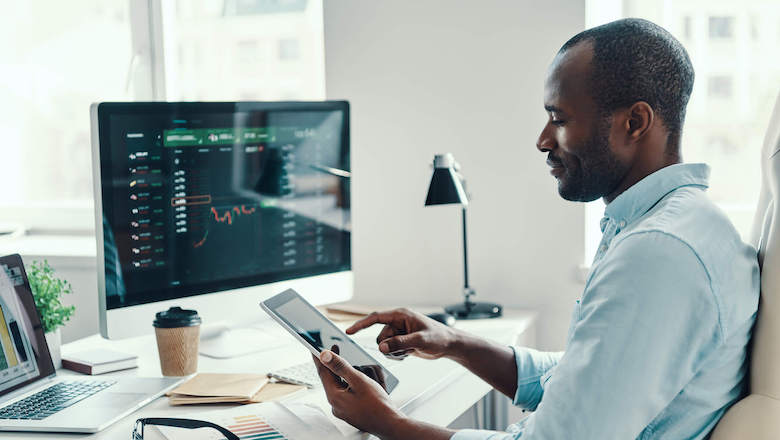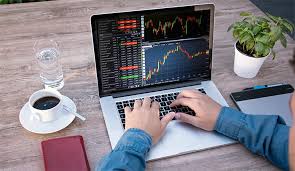
How to Start Forex Trading: A Comprehensive Guide for Beginners
Are you interested in entering the world of currency trading? If so, you’re in the right place. This article will guide you through the various steps involved in starting your forex trading journey. how to start forex trading Forex Brokers in Argentina can be especially useful as you start to navigate this exciting market. Read on to learn more about the basics of forex trading, the tools and resources you’ll need, and some strategies for success.
Understanding Forex Trading
Forex trading, or foreign exchange trading, involves buying and selling currencies in order to profit from their fluctuating values. The forex market is the largest and most liquid financial market in the world, with trillions of dollars traded daily. Understanding the basics of forex trading is essential for anyone looking to get started in this field.
Step 1: Educate Yourself
The first step in starting forex trading is to educate yourself. Understanding how the forex market operates, the various trading strategies, and the terminology involved is crucial. Here are some resources to help you learn:
- Online courses: Websites like Coursera and Udemy offer courses on forex trading.
- Books: Many books cover forex trading basics and strategies.
- Forex forums: Engaging in online communities can provide insights from experienced traders.

Step 2: Choose a Reliable Forex Broker
Choosing a forex broker is one of the most critical decisions you’ll make as a trader. A reliable broker provides you with the platform to trade and access to various trading tools. Look for a broker that is regulated, offers competitive spreads, and has a user-friendly interface. Compare different brokers and read reviews to find the best fit for your trading style.
Step 3: Open a Trading Account
Once you’ve chosen a broker, you’ll need to open a trading account. Most brokers offer different types of accounts based on your trading experience and capital. You typically have the option to choose between standard, mini, or micro accounts, depending on the amount of capital you wish to invest. Be prepared to provide identification and proof of residency during the registration process.
Step 4: Fund Your Account
After your trading account is set up, the next step is to fund it. Most brokers offer a variety of funding options, including credit/debit cards, bank transfers, and e-wallets like PayPal and Skrill. Ensure that your funding method is secure and aligns with your preferences. Remember that some brokers may charge fees for deposits and withdrawals.
Step 5: Develop a Trading Plan

Having a trading plan will significantly increase your chances of success in the forex market. Your trading plan should outline your goals, risk tolerance, and trading strategies. Determine how much capital you’re willing to risk on each trade and establish guidelines for entering and exiting trades. Be sure to include risk management strategies to protect your capital.
Step 6: Start with a Demo Account
Before risking real money, practice trading on a demo account. Most brokers offer this type of account, allowing you to trade with virtual funds. Use this opportunity to test your strategies, familiarize yourself with the trading platform, and understand how to analyze market trends. A demo account is a great way to gain confidence before trading with real money.
Step 7: Learn Market Analysis
To be a successful forex trader, you need to learn how to analyze the market. There are two main types of analysis used in forex trading:
- Fundamental Analysis: This approach focuses on economic indicators, interest rates, and geopolitical events that can affect currency values.
- Technical Analysis: This involves analyzing price charts and using indicators to predict future price movements.
Many traders use a combination of both analysis methods to make informed trading decisions.
Step 8: Start Trading
Once you’ve completed your education, selected a broker, funded your account, developed a trading plan, and practiced on a demo account, you’re ready to start trading with real money. Remember to stay disciplined to your trading plan and avoid making impulsive decisions based on emotions. Keep track of your trades and learn from both your successes and failures.
Step 9: Keep Learning and Improving
The forex market is continuously evolving, and it’s essential to stay up-to-date with market trends and new trading techniques. Consider attending webinars, joining trading communities, or subscribing to forex news services. Continuous learning will help you adapt to changing market conditions and refine your trading strategies.
Final Thoughts
Starting forex trading can be an exciting yet challenging endeavor. By following these steps and dedicating time to education and practice, you can develop the skills necessary to succeed in the forex market. Remember to manage your risks, stay disciplined, and continue learning. The journey may be long, but with determination and the right approach, you can achieve your trading goals.